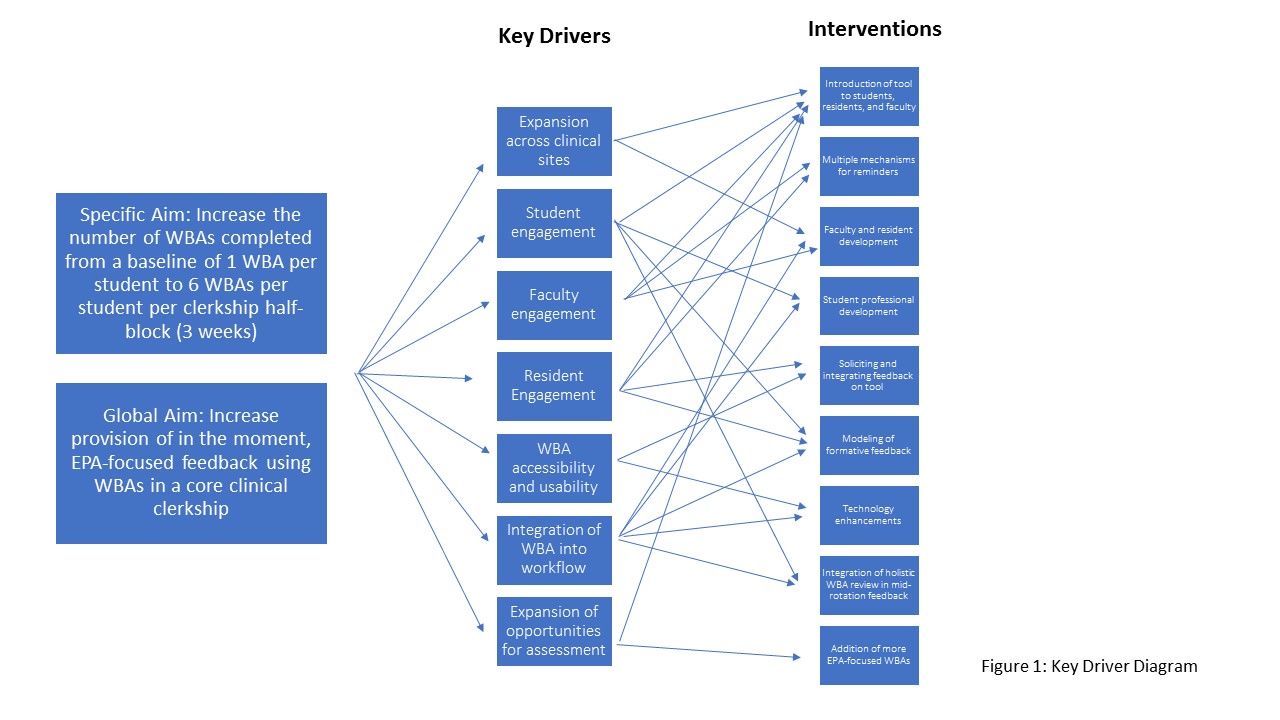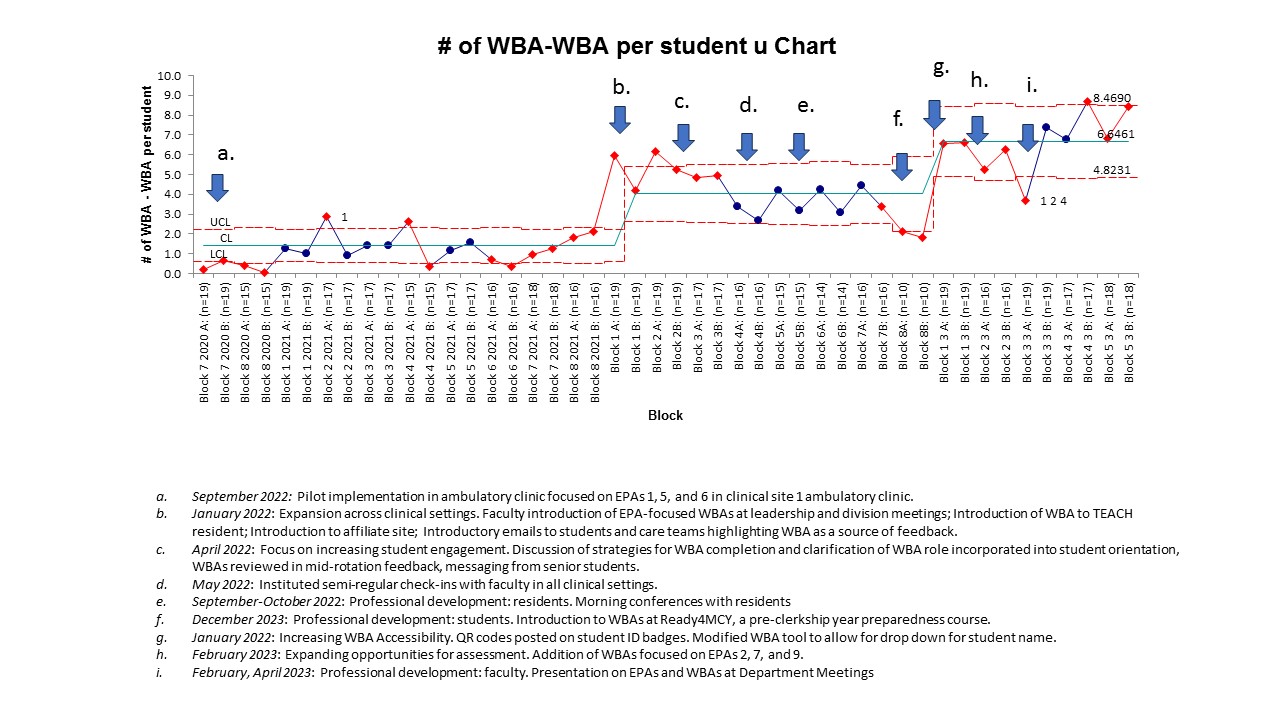Medical Education
Session: Medical Education 4
401 - Use of Quality Improvement Methodology to Improve Completion of EPA-Focused WBAs in the Pediatrics Clerkship
Saturday, May 4, 2024
3:30 PM - 6:00 PM ET
Poster Number: 401
Publication Number: 401.1296
Publication Number: 401.1296
.jpg)
Marguerite Costich, MD,MS (she/her/hers)
Assistant Professor of Pediatrics
Columbia University Vagelos College of Physicians and Surgeons
Darien, Connecticut, United States
Presenting Author(s)
Background: Implementation of Entrustable Professional Activity (EPA)-focused workplace-based assessments (WBAs) remains a challenge. A growing body of literature describes the application of quality improvement (QI) methodology to initiatives within medical education. To our knowledge, no studies have used QI methodology to improve completion of EPA-focused WBAs in a core medical student clerkship.
Objective: The specific aim of this project was to increase the number of WBAs completed from a baseline of 1 WBA per student to 6 WBAs per student per pediatric clerkship half-block (3 weeks).
Design/Methods: Pediatric clerkship students at Columbia University Vagelos College of Physicians and Surgeons (10-19 per block, 126 per year) rotate through multiple clinical settings at one of two clinical sites over 6 weeks. An EPA-focused WBA was created to provide targeted, just in time feedback. A key driver diagram was constructed to identify primary factors affecting WBA completion and inform plans for interventions based on faculty and student feedback and review of course evaluations focused on barriers and facilitators of WBA completion (Figure 1). The outcome measure was the number of WBAs completed for each student per clerkship half-block. Serial Plan, Do, Study, Act (PDSA) cycles were used to test interventions predicted to improve WBA completion. Number of WBAs completed were tracked in a time series model to evaluate the effectiveness of individual PDSA cycles and inform plans for subsequent interventions.
Results: The number of WBAs per student increased from a baseline of 1 to a sustained mean of 6.6 (Figure 2). Based on the rules of special cause variation, two shifts were seen in the median line on the u-chart (1.1 to 4 to 6.6). Substantial and sustained increases in completion of WBAs were associated with faculty and resident development and implementation of additional EPA-focused WBAs, such as EPA 9, to create more opportunities for feedback and direct observation.
Conclusion(s): While barriers to WBA completion are well understood, information is limited on successful strategies to increase the number of WBAs completed. Institutions that are looking to integrate more opportunities for feedback can apply lessons learned to increase utilization of WBAs in their clerkships. Next steps will include exploring the effectiveness of interventions to increase the quality of WBAs completed, particularly the narrative comments, and assessing whether increases in the number of WBAs completed for an individual student correlate with changes in skill progression and development.


